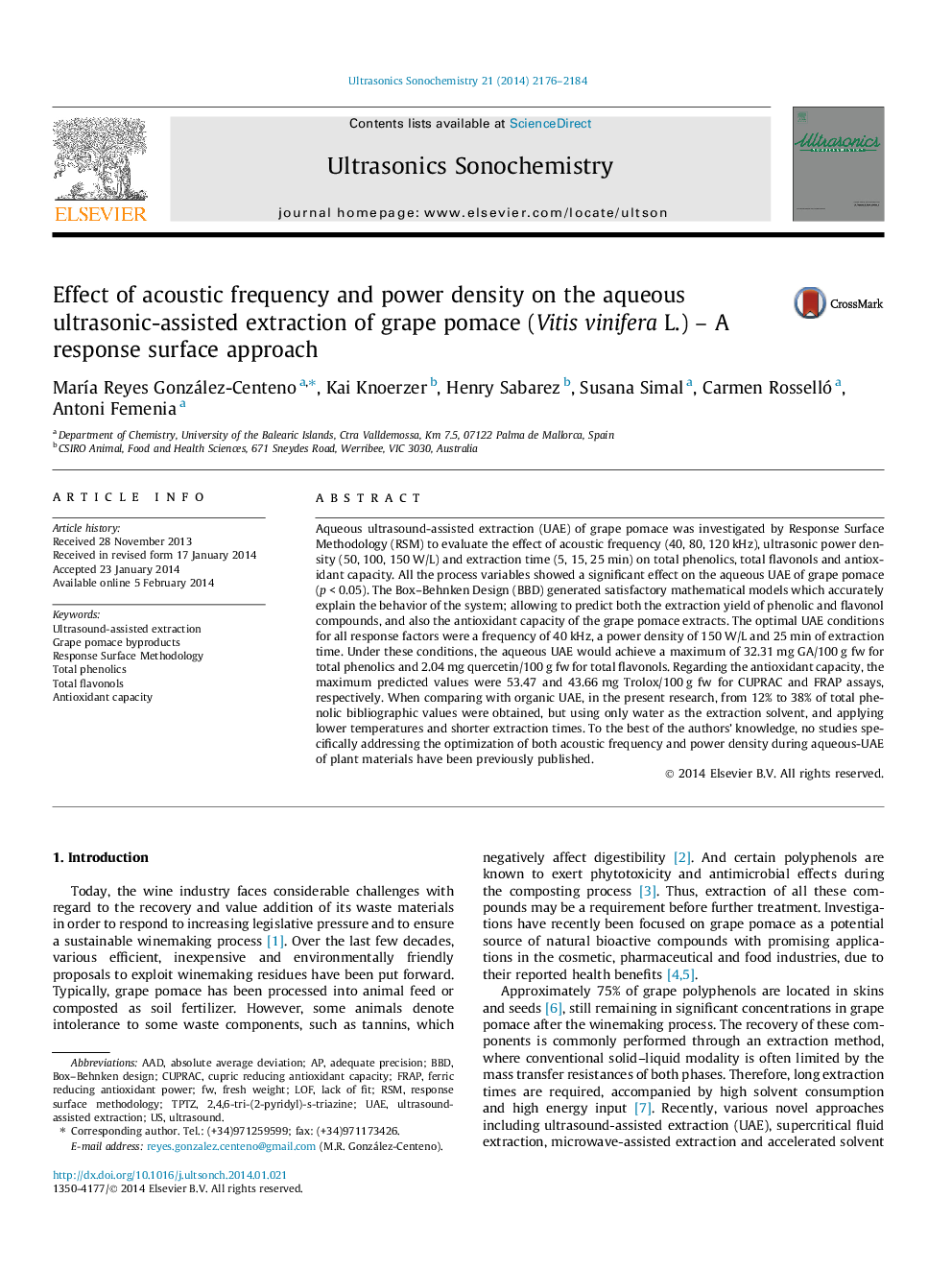| کد مقاله | کد نشریه | سال انتشار | مقاله انگلیسی | نسخه تمام متن |
|---|---|---|---|---|
| 1265079 | 972193 | 2014 | 9 صفحه PDF | دانلود رایگان |

• Aqueous acoustic extraction of grape pomace studied by Response Surface Methodology.
• Both ultrasonic frequency and power effect on phenolic extraction was investigated.
• Mathematical response models represented the system behavior adequately.
• All experimental variables had significant effect (p < 0.05) on extraction process.
• Optimal conditions were found to be 40 kHz, 150 W/L and 25 min of treatment.
Aqueous ultrasound-assisted extraction (UAE) of grape pomace was investigated by Response Surface Methodology (RSM) to evaluate the effect of acoustic frequency (40, 80, 120 kHz), ultrasonic power density (50, 100, 150 W/L) and extraction time (5, 15, 25 min) on total phenolics, total flavonols and antioxidant capacity. All the process variables showed a significant effect on the aqueous UAE of grape pomace (p < 0.05). The Box–Behnken Design (BBD) generated satisfactory mathematical models which accurately explain the behavior of the system; allowing to predict both the extraction yield of phenolic and flavonol compounds, and also the antioxidant capacity of the grape pomace extracts. The optimal UAE conditions for all response factors were a frequency of 40 kHz, a power density of 150 W/L and 25 min of extraction time. Under these conditions, the aqueous UAE would achieve a maximum of 32.31 mg GA/100 g fw for total phenolics and 2.04 mg quercetin/100 g fw for total flavonols. Regarding the antioxidant capacity, the maximum predicted values were 53.47 and 43.66 mg Trolox/100 g fw for CUPRAC and FRAP assays, respectively. When comparing with organic UAE, in the present research, from 12% to 38% of total phenolic bibliographic values were obtained, but using only water as the extraction solvent, and applying lower temperatures and shorter extraction times. To the best of the authors’ knowledge, no studies specifically addressing the optimization of both acoustic frequency and power density during aqueous-UAE of plant materials have been previously published.
Journal: Ultrasonics Sonochemistry - Volume 21, Issue 6, November 2014, Pages 2176–2184